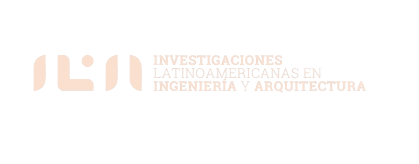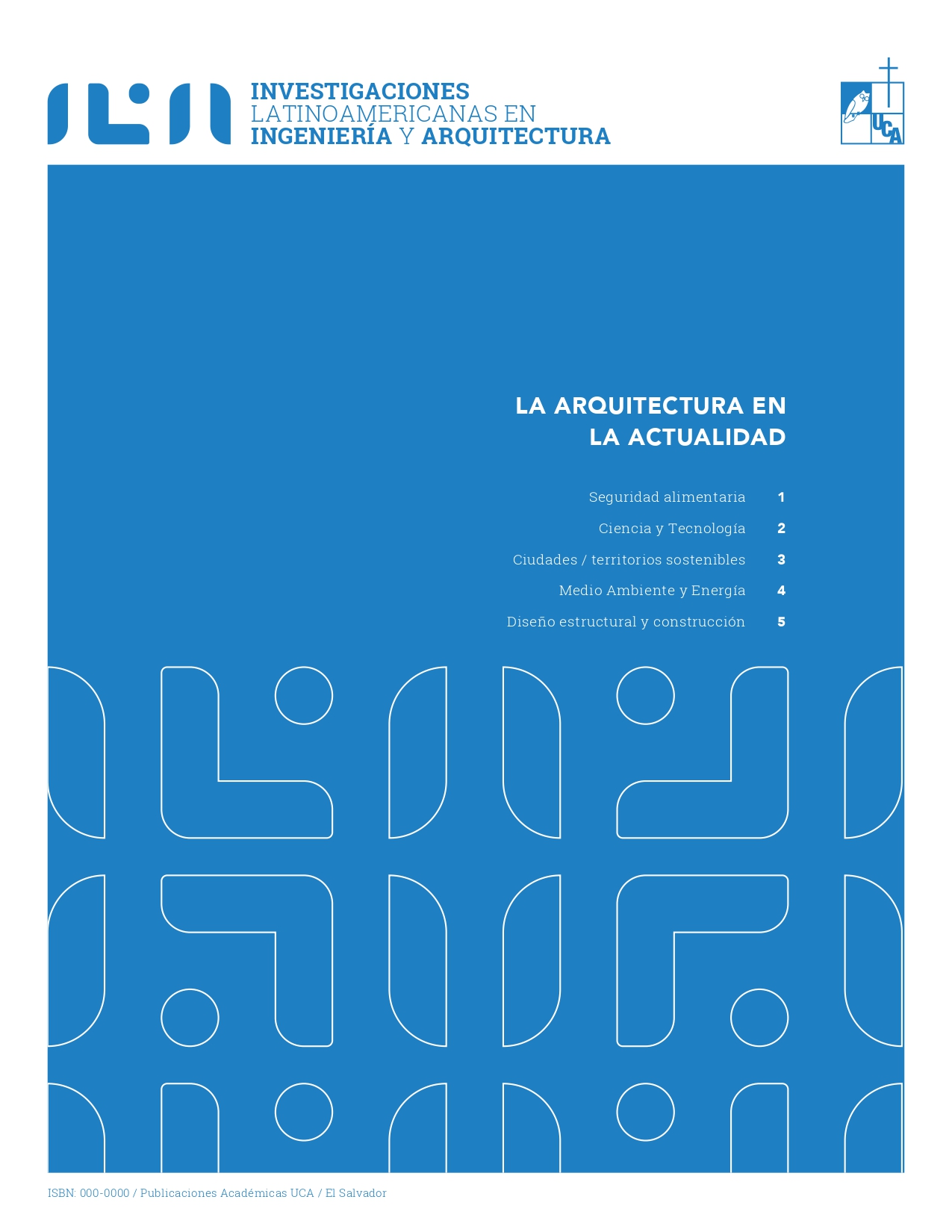Resumen
El comportamiento de muros de concreto reforzado con acero de alta resistencia (esfuerzo de fluencia mayor o igual a 550 MPa [80 ksi]) es evaluado. La influencia del esfuerzo de fluencia (fy) y de relación esfuerzo último a esfuerzo de fluencia (ft/fy) se analizan por medio de ensayos en muros de concreto en forma de T. Adicionalmente, se evalúan los efectos de la elongación uniforme (Esu) y la elongación de fractura (Esf). Se ensayaron dos muros reforzados con acero Grado 690 o 830 (100 o 120) (fy = 690 o 830 MPa [100 o 120 ksi]) y con resistencia del concreto de 55 MPa (8 ksi). Resultados de los ensayos se compararon con ensayos previos para validar cambios en el Código de diseño de concreto (ACI 318). Los datos obtenidos sugieren que los muros con acero de alta resistencia tienen una capacidad de deformación similar a muros reforzados con acero convencional (fy = 420 MPa [60 ksi]). Sin embargo, el acero debe satisfacer ft/fy≥1.2,Esu≤6%yEsf≥10% para que los muros tengan un comportamiento satisfactorio.
ILIA: Investigaciones Latinoamericanas en Ingeniería y Arquitectura, No. 01, 2024: 91-99.
Referencias
Saatcioglu M., Palermo D., Ghobarah A., Mitchell D., Simpson R., Adebar P., Tremblay R.,Ventura C., and Hong H. “Performance of Reinforced Concrete Buildings During the 27 February 2010 Maule (Chile) Earthquake.” Canadian Journal of Civil Engineering, 40(8), 693-710, 2013.
Elwood K. J. “Performance of Concrete Buildings in the 22 February 2011 Christchurch Earthquake and Implications for Canadian Codes.” Canadian Journal of Civil Engineering, 40(3), 759-776, 2011.
Wallace J. W. “Behavior, Design, and Modeling of Structural Walls and Coupling Beams – Lessons from Recent Laboratory Tests and Earthquakes.” International Journal of Concrete Structures and Materials, 6(1), 3-18, 2012.
ACI Committee 318, “Building Code Requirements for Reinforced Concrete (ACI 318-14).” American Concrete Institute, Farmington Hills, Michigan, 519 pp., 2014.
Richart F. E. and Brown R. L. “An Investigation of Reinforced Concrete Columns.” Engineering Experiment Station, Bulletin No. 267, University of Illinois, Urbana, Illinois, 1934.
Gaston J. R. and Hognestad E. “High-Strength Bars as Concrete Reinforcement, Part 3: Tests of Full-Scale Roof Girder.” Journal of the PCA Research and Development Laboratories, 4(2), 10-23, 1962.
Hognestad E. “High-Strength Bars as Concrete Reinforcement, Part 1: Introduction to a Series of Experimental Reports.” Journal of the PCA Research and Development Laboratories, 3(3), 23-29, 1961.
Hognestad E. “High-Strength Bars as Concrete Reinforcement, Part 2: Control of Flexural Cracking.” Journal of the PCA Research and Development Laboratories, 4(1), 46-63, 1962.
Kaar P. H. and Mattock A. H. “High Strength Bars as Concrete Reinforcement, Part 4: Control of Cracking.” Journal of the PCA Research and Development Laboratories, 5(1), 15-38, 1963.
Kaar P. H. and Hognestad E. “High Strength Bars as Concrete Reinforcement, Part 7: Control of Cracking in T-Beam Flanges.” Journal of the PCA Research and Development Laboratories, 7(1), 42-53, 1965
Kaar P. H. “High Strength Bars as Concrete Reinforcement, Part 8: Similitude in Flexural Cracking of T-Beam Flanges.” Journal of the PCA Research and Development Laboratories, 8(2), 2-12, 1966.
Pfister J. F. and Mattock A. H. “High Strength Bars as Concrete Reinforcement, Part 5: Lapped Splices in Concentrically Loaded Columns.” Journal of the PCA Research and Development Laboratories, 5(2), 27-40, 1963.
Pfister J. F. and Hognestad E. “High Strength Bars as Concrete Reinforcement, Part 6: Fatigue Tests.” Journal of the PCA Research and Development Laboratories, 6(1), 65-84, 1964.
Muguruma H. and Watanabe F. “Ductility Improvement of High-Strength Concrete Columns with Lateral Confinement.” Proceedings, Second International Symposium on High-Strength Concrete, SP-121, American Concrete Institute, Farmington Hills, Michigan, pp. 47-60,
Sugano, S.; Nagashima, T.; Kimura, H.; Tamura, A.; and Ichikawa, A., “Experimental Studies on Seismic Behavior of Reinforced Concrete Members of High Strength Concrete,” Proceedings, Second International Symposium on High-Strength Concrete, SP-121,
American Concrete Institute, Farmington Hills, Michigan, pp. 61-87, 1990.
Budek A., Priestley M. J. N., and Lee C. O. “Seismic Design of Columns with High-Strength Wire and Strand as Spiral Reinforcement.” ACI Structural Journal, 99(5), 660-670, 2002.
Rautenberg J. M., Pujol S., Tavallali H., and Lepage A. “Drift Capacity of Concrete Columns Reinforced with High-Strength Steel.” ACI Structural Journal, 110(2), 307-317, 2014.
Tavallali H., Lepage A., Rautenberg J. M., and Pujol S. “Concrete Beams Reinforced with High-Strength Steel Subjected to Displacement Reversals.” ACI Structural Journal, 111(5), 1037-1047, 2014.
Pfund S. J. “Cyclic Response of Concrete Beams Reinforced with ASTM A1035 Grade-120 Steel Bars.” MS Thesis, The Pennsylvania State University, University Park, Pennsylvania, 2012.
Tretiakova K. “Cyclic Response of Concrete Columns Reinforced with SAS 670 Grade-97 Steel Bars.” MS Thesis, The Pennsylvania State niversity, University Park, Pennsylvania, 2013.
Huq M. S., Weber-Kamin A., Ameen S., Lequesne R., and Lepage A. “High-Strength Steel Bars in Earthquake-Resistant T-Shaped Concrete Walls.” SM Report No. 128, The University of Kansas, Center for Research Inc., Lawrence, Kansas, 365 pp., 2018.
Cheng M. Y., Hung S. C., Lequesne R.D., and Lepage A. “Earthquake-Resistant Squat Walls Reinforced with High-Strength Steel.” ACI Structural Journal, 113(5), 1065-1076, 2016.
Weber-Kamin A. S., Lequesne R. D., and Lepage A. “Reinforced Concrete Coupling Beams with High-Strength Steel Bars.” SM Report No. 143, The University of Kansas Center for Research, Inc., Lawrence, KS, 598 pp., 2020.
Burgos E. A., Lequesne R., and Lepage A. “Earthquake-Resistant T-Shaped Concrete Walls with High-Strength Steel Bars.” SM Report No. 142, The University of Kansas, Center for Research Inc., Lawrence, Kansas, 356 pp., 2020.
FEMA 461 “Interim Testing Protocols for Determining the Seismic Performance Characteristics of Structural and Nonstructural Components.” Applied Technology Council, Redwood City, California, 113 pp., 2007.
ASTM C39 “Standard Test Method for Compressive Strength of Cylindrical Concrete Specimens (ASTM C39/C39M-17a).” ASTM International, West Conshohocken, Pennsylvania, 2017.
ASTM C496 “Standard Test Method for Splitting Tensile Strength of Cylindrical Concrete Specimens (ASTM C496/C496M-11).” ASTM International, West Conshohocken, Pennsylvania, 2011.
ASTM A370 “Standard Test Methods and Definitions for Mechanical Testing of Steel Products (ASTM A370-17).” ASTM International, West Conshohocken, Pennsylvania, 2017.
ASTM E8 “Standard Test Methods for Tension Testing of Metallic Materials (ASTM E8/E8M-16a).” ASTM International, West Conshohocken, Pennsylvania, 2016.
ASTM A1035 “Standard Specification for Deformed and Plain, Low-Carbon, Chromium, Steel Bars for Concrete Reinforcement ASTMA1035/A1035M-16b).” ASTM International, West Conshohocken, Pennsylvania, 2016.
ASTM A706 “Standard Specification for Deformed and Plain Low-Alloy Steel Bars for Concrete Reinforcement (ASTM A706/A706M- 16).” ASTM International, West Conshohocken, Pennsylvania, 2016.
M.S. Huq, E.A. Burgos, R. D. Lequesne and A. Lepage, “High StrengthSteel Bars in Earthquake Resistant Reinforced Concrete T-Shaped Walls,” ACI Structural Journal, vol. 118, pp. 215-226, 2021.
ACI Committee 318, “Building Code Requirements for ReinforcedConcrete (ACI 318-19).” American Concrete Institute, Farmington Hills, Michigan, 623 pp., 2019.
ASTM A706 “Standard Specification for Deformed and Plain Low-Alloy Steel Bars for Concrete Reinforcement (ASTM A706/A706M-22a).” ASTM International, West Conshohocken, Pennsylvania, 2022.
ASTM A615 “Standard Specification for Deformed and Plain Carbon-Steel Bars for Concrete Reinforcement (ASTM A615/A615M-22).”
ASTM International, West Conshohocken, Pennsylvania, 2022.[9] Kaar P. H. and Mattock A. H. “High Strength Bars as Concrete Reinforcement, Part 4: Control of Cracking.” Journal of the PCA Research and Development Laboratories, 5(1), 15-38, 1963.
Kaar P. H. and Hognestad E. “High Strength Bars as Concrete Reinforcement, Part 7: Control of Cracking in T-Beam Flanges.” Journal of the PCA Research and Development Laboratories, 7(1), 42-53, 1965
Kaar P. H. “High Strength Bars as Concrete Reinforcement, Part 8: Similitude in Flexural Cracking of T-Beam Flanges.” Journal of the PCA Research and Development Laboratories, 8(2), 2-12, 1966.
Pfister J. F. and Mattock A. H. “High Strength Bars as Concrete Reinforcement, Part 5: Lapped Splices in Concentrically Loaded Columns.” Journal of the PCA Research and Development Laboratories, 5(2), 27-40, 1963.
Pfister J. F. and Hognestad E. “High Strength Bars as Concrete Reinforcement, Part 6: Fatigue Tests.” Journal of the PCA Research and Development Laboratories, 6(1), 65-84, 1964.
Muguruma H. and Watanabe F. “Ductility Improvement of High-Strength Concrete Columns with Lateral Confinement.” Proceedings, Second International Symposium on High-Strength Concrete, SP-121, American Concrete Institute, Farmington Hills, Michigan, pp. 47-60, 1990.
Sugano, S.; Nagashima, T.; Kimura, H.; Tamura, A.; and Ichikawa, A., “Experimental Studies on Seismic Behavior of Reinforced Concrete Members of High Strength Concrete,” Proceedings, Second International Symposium on High-Strength Concrete, SP-121, American Concrete Institute, Farmington Hills, Michigan, pp. 61-87, 1990.
Budek A., Priestley M. J. N., and Lee C. O., “Seismic Design of Columns with High-Strength Wire and Strand as Spiral Reinforcement.” ACI Structural Journal, 99(5), 660-670, 2002.
Rautenberg J. M., Pujol S., Tavallali H., and Lepage A. “Drift Capacity of Concrete Columns Reinforced with High-Strength Steel.” ACI Structural Journal, 110(2), 307-317, 2014.
Tavallali H., Lepage A., Rautenberg J. M., and Pujol S. “Concrete Beams Reinforced with High-Strength Steel Subjected to Displacement Reversals.” ACI Structural Journal, 111(5), 1037-1047, 2014.
Pfund S. J. “Cyclic Response of Concrete Beams Reinforced with ASTM A1035 Grade-120 Steel Bars.” MS Thesis, The Pennsylvania State University, University Park, Pennsylvania, 2012.
Tretiakova K. “Cyclic Response of Concrete Columns Reinforced with SAS 670 Grade-97 Steel Bars.” MS Thesis, The Pennsylvania State University, University Park, Pennsylvania, 2013.
Huq M. S., Weber-Kamin A., Ameen S., Lequesne R., and Lepage A. “High-Strength Steel Bars in Earthquake-Resistant T-Shaped Concrete Walls.” SM Report No. 128, The University of Kansas, Center for Research Inc., Lawrence, Kansas, 365 pp., 2018.
Cheng M. Y., Hung S. C., Lequesne R.D., and Lepage A. “Earthquake-Resistant Squat Walls Reinforced with High-Strength Steel.” ACI Structural Journal, 113(5), 1065-1076, 2016.
Weber-Kamin A. S., Lequesne R. D., and Lepage A. “Reinforced Concrete Coupling Beams with High-Strength Steel Bars.” SM Report No. 143, The University of Kansas Center for Research, Inc., Lawrence, KS, 598 pp., 2020.
Burgos E. A., Lequesne R., and Lepage A. “Earthquake-Resistant T-Shaped Concrete Walls with High-Strength Steel Bars.” SM Report No. 142, The University of Kansas, Center for Research Inc., Lawrence, Kansas, 356 pp., 2020.
FEMA 461 “Interim Testing Protocols for Determining the Seismic Performance Characteristics of Structural and Nonstructural Components.” Applied Technology Council, Redwood City, California, 113 pp., 2007.
ASTM C39 “Standard Test Method for Compressive Strength of Cylindrical Concrete Specimens (ASTM C39/C39M-17a).” ASTM International, West Conshohocken, Pennsylvania, 2017.
ASTM C496 “Standard Test Method for Splitting Tensile Strength of Cylindrical Concrete Specimens (ASTM C496/C496M-11).” ASTM International, West Conshohocken, Pennsylvania, 2011.
ASTM A370 “Standard Test Methods and Definitions for Mechanical Testing of Steel Products (ASTM A370-17).” ASTM International, West Conshohocken, Pennsylvania, 2017.
ASTM E8 “Standard Test Methods for Tension Testing of Metallic Materials (ASTM E8/E8M-16a).” ASTM International, West Conshohocken, Pennsylvania, 2016.
ASTM A1035 “Standard Specification for Deformed and Plain, Low-Carbon, Chromium, Steel Bars for Concrete Reinforcement (ASTM A1035/A1035M-16b).” ASTM International, West Conshohocken, Pennsylvania, 2016.
ASTM A706 “Standard Specification for Deformed and Plain Low-Alloy Steel Bars for Concrete Reinforcement (ASTM A706/A706M-16).” ASTM International, West Conshohocken, Pennsylvania, 2016.
M.S. Huq, E.A. Burgos, R. D. Lequesne and A. Lepage, “High Strength Steel Bars in Earthquake Resistant Reinforced Concrete T-Shaped Walls,” ACI Structural Journal, vol. 118, pp. 215-226, 2021.
ACI Committee 318, “Building Code Requirements for Reinforced Concrete (ACI 318-19).” American Concrete Institute, Farmington Hills, Michigan, 623 pp., 2019.
ASTM A706 “Standard Specification for Deformed and Plain Low-Alloy Steel Bars for Concrete Reinforcement (ASTM A706/A706M-22a).” ASTM International, West Conshohocken, Pennsylvania, 2022.
ASTM A615 “Standard Specification for Deformed and Plain Carbon-Steel Bars for Concrete Reinforcement (ASTM A615/A615M-22).” ASTM International, West Conshohocken, Pennsylvania, 2022.

Esta obra está bajo una licencia internacional Creative Commons Atribución-NoComercial 4.0.
Derechos de autor 2024 E. A. Burgos, A. Lepage, R. Lequesne (Autor/a)





